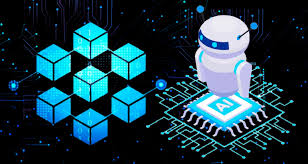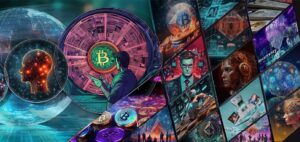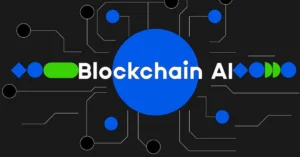NFTs (Non-Fungible Tokens) have taken the world by storm, providing artists, musicians, game developers, and content creators with new ways to monetize their work. These unique digital assets, verified on the blockchain, represent ownership of digital or physical items such as artwork, music, videos, and virtual land. But what happens when artificial intelligence (AI) meets NFTs? In this post, we’ll explore how AI is enhancing NFTs, making them more interactive, dynamic, and valuable.
How AI Enhances NFTs
Traditionally, NFTs have been static, representing digital assets like art, music, or videos. However, by integrating AI into NFTs, creators can generate interactive, evolving, and personalized assets. AI can create digital art that changes over time based on certain conditions. For instance, an AI-powered artwork may evolve depending on the viewer’s interactions or respond to market trends. These evolving NFTs add a new layer of excitement and uniqueness to the space, as owners may have different experiences depending on how they interact with their NFT.
In the gaming industry, AI-powered NFTs could represent characters or assets that change their behavior or abilities based on gameplay. An in-game character, for example, could evolve over time, learning from the player’s behavior and offering a personalized gaming experience.
Another key use case is generative art. AI can be used to create new, unique art pieces that can be minted as NFTs. Using algorithms like GANs (Generative Adversarial Networks), artists can generate infinite variations of art that are still unique, ensuring that every piece remains one-of-a-kind.
Blockchain and Provenance
Blockchain plays a vital role in ensuring the authenticity and ownership of NFTs. When an artist creates an AI-generated artwork, the NFT serves as proof of ownership, and blockchain records the transaction. This removes the possibility of forgery or duplication, as blockchain guarantees that each NFT is unique and traceable back to its creator.
Additionally, blockchain can be used to set royalty mechanisms for AI-generated NFTs, ensuring that creators receive a percentage of the sales whenever their work is resold. This offers a continuous revenue stream for artists, something that traditional art markets have struggled to provide.
Ethical and Legal Implications
While AI-generated NFTs open up new possibilities for creators, they also introduce new challenges. One concern is intellectual property (IP) rights. Who owns the rights to an AI-generated artwork: the artist who created the AI model, the owner of the NFT, or the AI itself? These questions are currently being debated in the legal space, and as AI-generated content becomes more widespread, the need for clear guidelines and regulations will grow.
Another issue is the potential for AI-generated NFTs to perpetuate biases. AI models are trained on existing data, and if that data contains biases, the generated artwork could inadvertently reinforce them. Ensuring that AI models used in NFT creation are fair and inclusive is a significant challenge that the community will need to address.
Disclaimer: NFTs and cryptocurrencies are volatile markets. Always exercise caution and seek advice from a financial professional before making any investments in digital assets.




